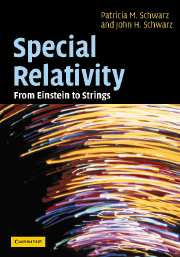Appendix 1 - Where do equations of motion come from?
Published online by Cambridge University Press: 06 July 2010
Summary
Long after Newton's equations of motion were well known in the physics and mathematics communities, there were a series of formal developments that helped to give a deeper understanding of the significance of these equations. These developments also provided a mathematical framework for describing and understanding new theories as they arose. This framework is useful not only for systems of point particles, but also for classical field theories, such as the Max well theory, and even for quantum field theories and string theories.
In this appendix, we survey some of the basic concepts and tools that have been developed. When all is said and done, the main message is that the central object for describing a theory, be it a classical or a quantum theory, is the action S. In classical theories the equations of motion are obtained by making the action stationary. In quantum theories one computes a probability amplitude by integrating the phase exp (i S/ħ) h over all possible trajectories.
Classical mechanics
Each dynamical system can be characterized by a set of independent variables that specify its degrees of freedom. For example, in the case of a theory of a collection of point particles, a possible choice is the positions of the particles. Let us refer to these coordinates as qi(t). The superscript i is mean to label both the directions of space and the particles. So if there are N particles in three dimensions, it takes 3N values.
- Type
- Chapter
- Information
- Special RelativityFrom Einstein to Strings, pp. 349 - 358Publisher: Cambridge University PressPrint publication year: 2004

